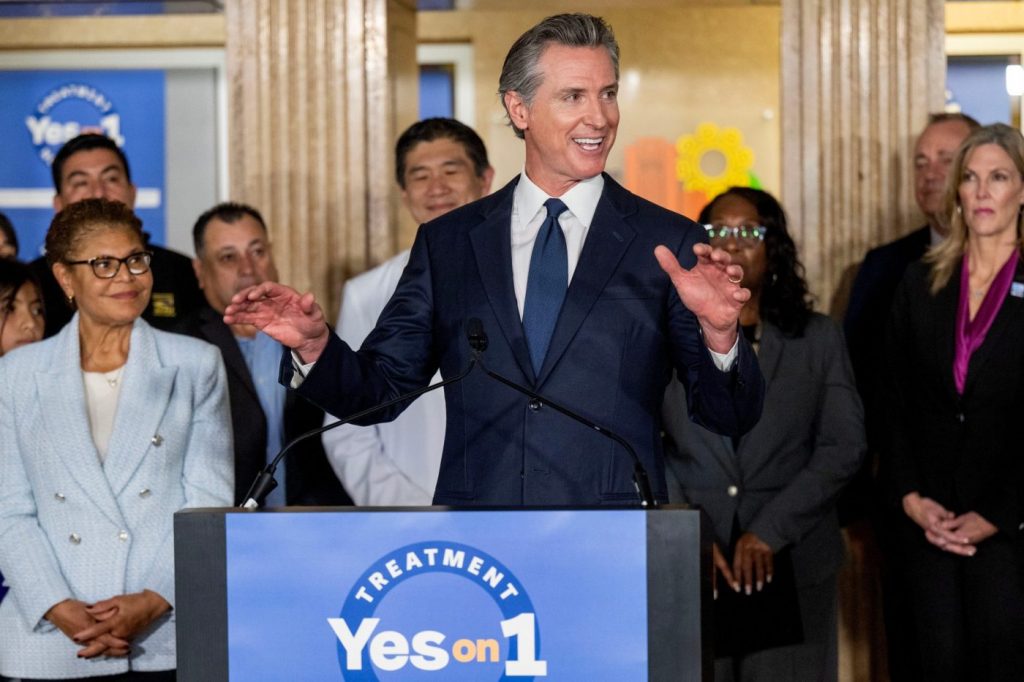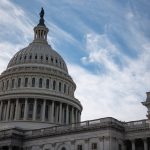Gov. Gavin Newsom’s $6.4 billion mental health bond measure held on to its very narrow lead on March 7, but final results were still too close to call in the secretary of state office’s latest vote update Thursday afternoon.
At that time, 50.2% of voters were in favor of Proposition 1 and 49.8% were opposed. A final result could take days or even weeks to confirm.
See the latest election results.
Most other major races that are relevant to Los Angeles County voters either have a clear winner or a clear answer on which two candidates are headed to a November runoff.
For the Los Angeles County District Attorney race, progressive incumbent George Gascon is poised to face off against tough-on-crime former federal prosecutor Nathan Hochman. The U.S. Senate race is gearing up to be a partisan showdown between Rep. Adam Schiff, D-Burbank, and Republican former Dodger Steve Garvey.
In the three Los Angeles County Board of Supervisors races incumbents Holly Mitchell, Janice Hahn and Kathryn Barger all held on to their clear majorities. This means they can clinch their seats in the primary and avoid the need to run in the general election.
That leaves just the nail-biting Prop. 1 race to keep an eye on.
The measure would direct $4.4 billion to fund 10,000 mental health beds and $2 billion for homeless housing projects, half of which would be reserved for veterans with mental illness or substance use issues. In addition, it would require counties to spend 30% of revenue from the Mental Health Services Act on housing.
Newsom touted the measure as a way to get “people off the streets, out of tents and into treatment.” The Yes on Prop 1 campaign amassed nearly $21 million and has the support of many influential organizations including the National Alliance on Mental Illness California, California Teachers Association and California Chamber of Commerce.
The “No on Prop. 1” campaign raised very little in comparison. It is led by mental health advocates, such as Disability Rights California, who fear that changing funding priorities for the Mental Health Services Act will result in service cuts and that new treatment beds will compel people into involuntary treatment. Other opponents, such as the Howard Jarvis Taxpayers Association, object to the high amount of government spending.
Barring a major shift in voting patterns in the ballots yet to count, it is likely, but not certain, that the proposition will narrowly pass.
It certainly does not have the comfortable margin that it held in early primary polls.
Likely voter support for the proposition fell from 68% to 59% between December and February, according to polling from the Public Policy Institute of California. On election night, it came dangerously close to dipping below the simple majority threshold needed to pass.
The reasons behind the drop in support are partly due to typical voting patterns, and partly due to opposition campaigns in action, election experts say.
Jaime Regalado, professor emeritus of political science at Cal State Los Angeles, said bond measures often lose steam as elections approach.
Related Articles
What could be next for Rep. Katie Porter after Senate loss?
Why does it take so long for votes to be tallied in California?
Prop. 1: Where are voters favoring Newsom’s tightly contested mental health measure?
Here’s what’s to come in the too-close-to-call race to replace U.S. Rep. Anna Eshoo
Can $7,000 win a Bay Area Senate seat? Republican Jim Shoemaker shocks in expensive race
“They (bond measures) sound great when there’s a certain amount of distance, say several months, half a year, before the election,” he said. “But as they get closer to election, if the economy is a question mark for some — or in this case there is this giant deficit that the state of California may find itself in — voters tend to get cold feet about voting for a proposition that they feel may cost them and add to the state’s financial woes.”
In addition, the demographics of primary voters could be influencing the measure’s lackluster support.
Voter turnout in primary elections typically skews older and more conservative, while young voters and voters of color tend to show up in greater numbers in the general election, said Fernando Guerra, professor of political science and Chicana/o Latina/o studies at Loyola Marymount University.
“Newsom had the option of putting his proposition in November where I think it would have passed more easily, but he chose this thinking he could dominate the airwaves on it,” he said. “That decision almost cost him greatly.”
Lastly, while the “No on Prop. 1” campaign did not have a lot of funding, it did have a message that played to both ends of the political spectrum, said Guerra. The argument that the proposition could fund involuntarily treatment for people with mental illness resonated with liberal voters, while the argument that the proposition irresponsibly increases government spending appealed to conservative voters.


